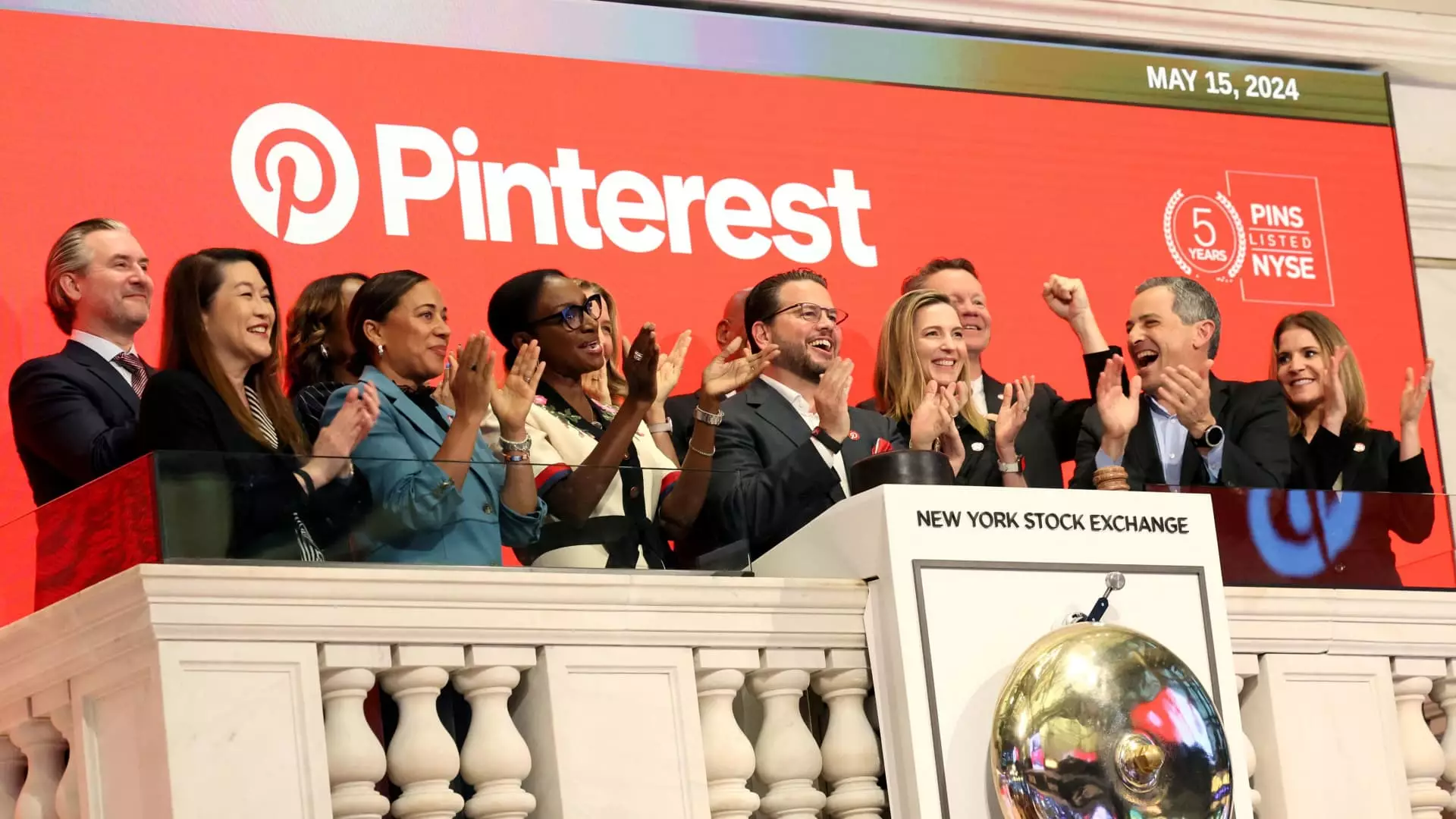Pinterest’s recent financial performance has sparked significant reactions in the stock market, particularly following the release of its third-quarter earnings report. While the company exceeded analysts’ expectations in terms of both revenue and earnings per share, the market’s focus quickly shifted to its cautious outlook for the fourth quarter, leading to a notable plunge in its stock price. This duality of positive and negative indicators paints a complex picture of Pinterest’s current standing in a highly competitive social media landscape.
In the third quarter, Pinterest recorded revenue of $898 million, slightly surpassing the $896 million predicted by analysts. Additionally, the company’s earnings per share (EPS) came in at 40 cents on an adjusted basis, exceeding expectations of 34 cents. Such results typically warrant a positive reception from investors, as they reflect effective management and potentially strong market demand. However, despite this upbeat performance, Pinterest provided a less optimistic forecast for its fourth-quarter revenue, projecting figures between $1.125 billion and $1.145 billion. The midpoint estimate of $1.135 billion fell short of the anticipated $1.143 billion by analysts, contributing to the sell-off in shares, which dropped by as much as 15%.
The apprehension surrounding Pinterest’s future earnings stems largely from its Chief Financial Officer, Julia Donnelly’s remarks regarding ongoing challenges in the advertising sector. Specifically, Donnelly pointed out the sluggishness from food and beverage advertisers, a vital segment of the consumer packaged goods market that has historically driven significant ad spending. This weakness, according to Donnelly, is likely to persist into the forthcoming quarter and may hinder Pinterest’s growth trajectory. The ability of a social media platform to leverage advertising revenue directly reflects its user engagement metrics, and the current challenges suggest that Pinterest may struggle to maintain robust growth amidst stiff competition from peers like Meta and Alphabet.
Amidst these challenges, Pinterest has authorized a $2 billion share buyback program, an approach that often signals confidence in a company’s long-term potential. Share repurchase initiatives can enhance shareholder value by reducing the number of outstanding shares, effectively increasing the earnings per share metric. Nonetheless, the timing of this buyback appears somewhat contradictory to the hesitance highlighted in the earnings call. Investors may interpret this move in different ways; it could be seen as a strategic maneuver to bolster stock price after disappointing guidance, or it might raise questions about the lack of alternate growth investments in the face of declining ad sales.
The competitive landscape for digital advertising is intensifying, as evidenced by recent earnings disclosures from other tech giants. Amazon reported a robust 19% growth in its advertising division, while Meta and Alphabet also showcased strong year-on-year gains. However, Meta faced scrutiny due to stagnant user growth metrics and rising infrastructure costs anticipated for 2025. The contrasting performance among these companies illustrates a fragmented market environment where Pinterest must navigate both opportunities and challenges.
With Reddit and Snap also releasing positive revenue growth figures, the pressure is on Pinterest to offer compelling results if it aims to sustain relevance in a rapidly evolving digital advertising ecosystem. Snap’s growth of 15% in revenues and Reddit’s dazzling 68% increase from the previous year exemplify the dynamic and competitive nature of this sector.
Pinterest’s recent financial results reflect a company that is performing well in certain respects, such as surpassing EPS and revenue estimates, but simultaneously encountering significant challenges in ad revenue growth. The cautious outlook for the coming quarter has inevitably led to market volatility, underscoring the sensitivity of investor sentiment in today’s market. As Pinterest continues to develop its strategies in an increasingly competitive arena, the steadfast support from its board in the form of buybacks suggests a commitment to weathering current storms while aiming for future growth. The coming months will be critical for Pinterest, as it seeks to reconcile its recent successes with the market’s apprehensions and execute plans to turn potential weaknesses into strengths.

Leave a Reply